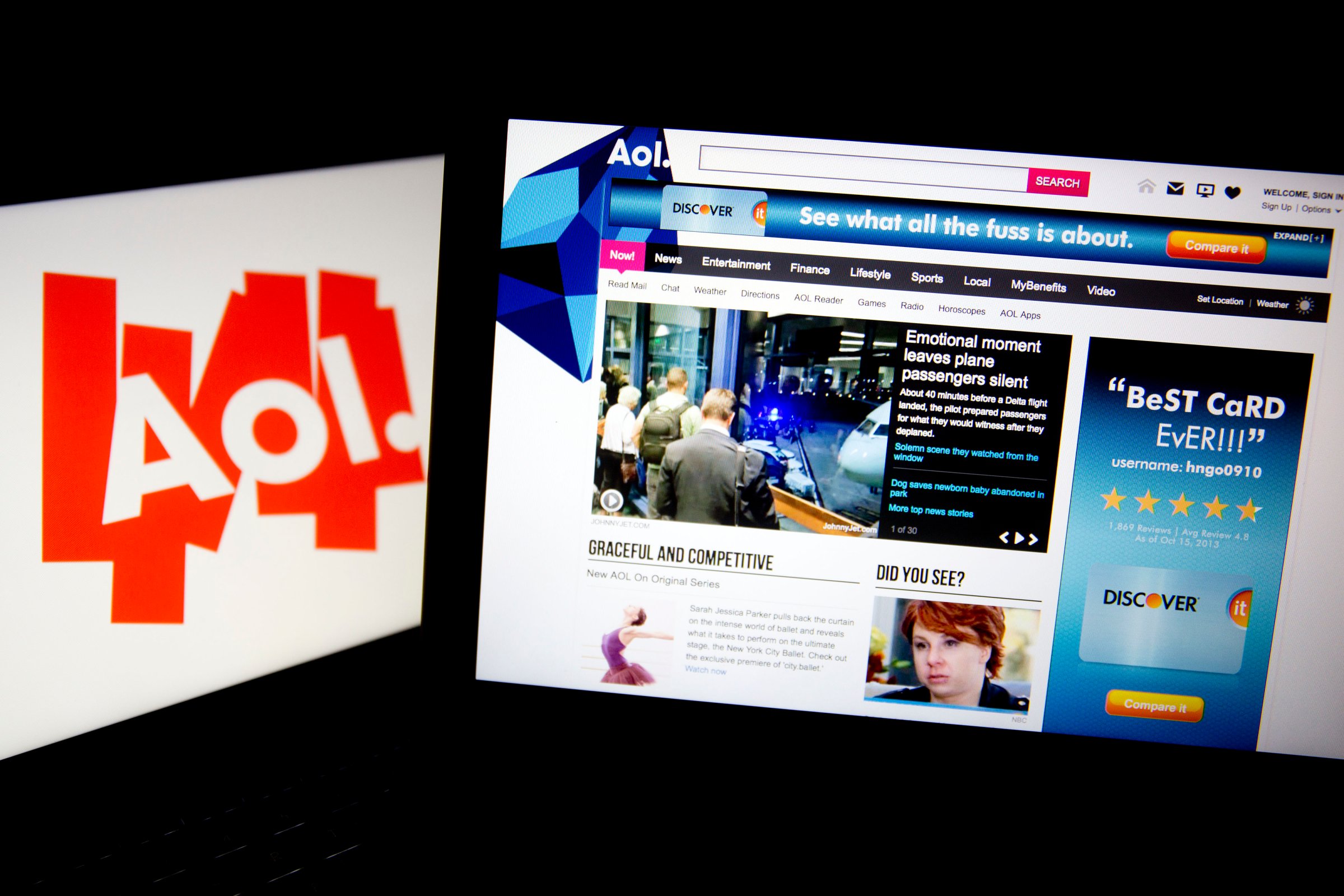
As an AOL dial-up subscriber, Phyllis Brock can’t watch YouTube because her Internet connection is too slow. Streaming movies on Netflix is such a farfetched idea that she’s never bothered to try.
“A few years ago, I tried to watch the ’12 Days of Christmas’ on YouTube,” said Brock, referring to the classic holiday song. “But I never got beyond that first partridge in a pear tree.”
So goes life in the slow-lane for the remaining AOL dial-up die-hards. Despite the widespread adoption of high-speed Internet connections, AOL still has 2.3 million dial-up customers. It’s an odd counterpoint to the hyper-connected world in which most Americans live. How can so many people still be so far behind in an era of flashy Web sites, shooter games and more streaming entertainment than anyone could possibly digest in a lifetime?
Last year, two percent of Americans used dial-up at home, according to the Pew Research Internet Project. In contrast, 70% had broadband.
The reasons for the divide are many. Some people are simply stuck in their ways or forgot to cancel their subscriptions. Others wrongly think they’ll lose access to their email accounts if they switch to broadband. Meanwhile, some people can’t afford the extra cost of a high-speed connection.
In fact, Brock, a retired French teacher in rural Tennessee, 55 miles from Knoxville, has few alternatives to dial-up. Like many people who live in remote areas, she has no access to broadband at home.
Around 19 million Americans lack high-speed connections, according to the Federal Communications Commission. In rural areas, nearly one-fourth of the population—14.5 million people—lack access.
Even today, the company once known as America Online makes the vast majority of its profits from dial-up and services packaged with it. Oddly enough, the company that got its start as a dial-up business during the Internet’s early day—and once had as many as 35 million subscribers—still depends on it.
In its latest fiscal quarter, for example, the company took in $139 million in profits from the division that includes dial-up compared with just $17 million from its online publishing business. Meanwhile, its corporate division and ad sales for third-party websites lost a combined $34 million in the quarter.
In the latest quarter, AOL’s made an average of $21.35 per subscriber per month. Those customers have been paying for an average of 14.1 years, the company said.
In effect, dial-up is funding AOL’s operations while CEO Tim Armstrong races to remake the business into one that is largely supported by online advertising. However, the clock is ticking because the dial-up business is steadily shrinking.
AOL has managed to slow the decline by pushing more add-on services like anti-virus software and tech support to its dial-up customers. Eventually, Armstrong hopes that subscription revenue will reverse course and start growing again from the sale of these bundled services.
“I would sure hope that we get to the point where subscriptions are growing again and that’s our goal,” Armstrong said during a conference call with investors in August.
For Brock, going online through her dial-up connection is an exercise in frustration. She recently had to give up on a search for the lyrics to the song “Let It Go” from the filmFrozen because she was unable to get any page to load.
“It drives me up the wall,” Brock said. “This morning I needed to send an e-mail and I suppose it took me 10 or 15 minutes to get on the Internet. Each time I tried to get e-mail, it would say I’m not connected. But I was.”
Brock’s dial-up speed seems to fluctuate based on the time of day, making her think strategically about when to log on. During working hours, speeds slow to a crawl, so she tends to go online during early morning and evening hours.
At one point, Brock enlisted a local computer technician to try to trouble shoot any problems that might explain her slow connection, but he ultimately concluded that there wasn’t anything he could do. Grandchildren who’ve tried to help haven’t had any luck either.
Brock got her first computer and a dial-up connection through Netscape around 20 years ago. AOL bought Netscape a few years later, but didn’t get around to switching the brand name on her dial-up service until a few months ago.
A potential remedy for Brock would be to switch to satellite Internet service. She says she’s considered it. But it’s unclear whether a satellite connection would work. Getting a signal usually requires pointing a satellite dish at the southern horizon, which may be difficult to do because her home—near the Appalachian Mountains—is surrounded by hilly “knobs,” as she put it.
“It is frustrating to me,” Brock said. “People find it incredible that I’m putting up with it.”
More Must-Reads from TIME
- Donald Trump Is TIME's 2024 Person of the Year
- Why We Chose Trump as Person of the Year
- Is Intermittent Fasting Good or Bad for You?
- The 100 Must-Read Books of 2024
- The 20 Best Christmas TV Episodes
- Column: If Optimism Feels Ridiculous Now, Try Hope
- The Future of Climate Action Is Trade Policy
- Merle Bombardieri Is Helping People Make the Baby Decision
Contact us at letters@time.com